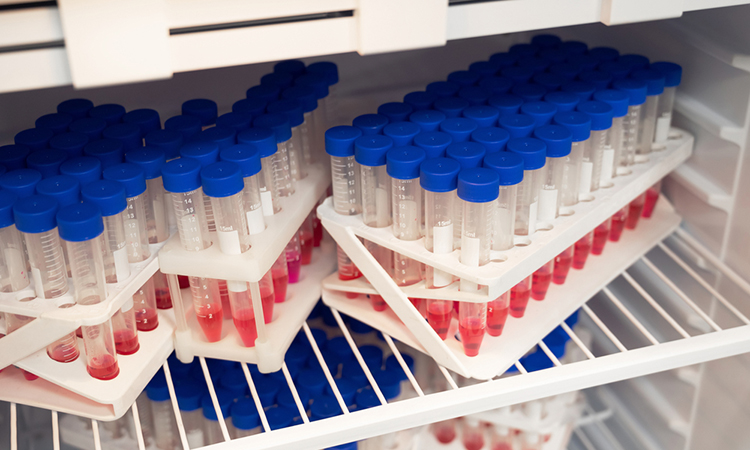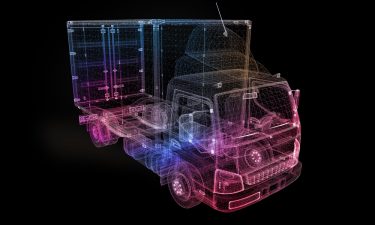Pharma cold chain: is our industry ready, willing and scalable?
Posted: 30 November 2020 | David Lewandowski (Brooks Life Sciences) | No comments yet
The pharmaceutical cold chain includes numerous participants – David Lewandowski discusses why this must be scalable to ensure efficient delivery of a COVID-19 vaccine.


The word sounds easy enough to understand, but putting it in the context of the cold chain, scalable can mean several things. All of them good.
In its simplest form, scalability is the ability to scale up or down; the capacity to be changed in size or scale. This applies to research, production, storage, transport, delivery and planning, all of which are segments in the cold chain.
In terms of information technology, scalability is the ability of a computing process to be used or produced in a range of capabilities. Again, when we say software, we are talking about a component of nearly every stage in the cold chain. Research, lab services, production, storage, transport and more.
In its most relevant meaning to the pharma industry, scalability is a characteristic of an organisation, system, model or function to perform under an expanding workload or scope. A system that can scale up and down will be able to maintain and even increase the level of performance or efficiency even if it is tested by larger operational demands.


The evolution of COVID-19 vaccine availability and distribution (known as Project Warp Speed in the US), has resonated in the community with everyone from scientists to logistics providers ramping up their capabilities.
In fact, a recent article on bioprocessing insights1 makes a compelling case for process intensification in the wake of staffing challenges. These two components will necessitate automation to support scalable, repeatable and documented processes that are in place and ready to use.
Starting with automation
In formulating a plan for scalability in the cold chain, automation must come first. The notion of automation is essential, especially since today’s pharma cold chain is getting even colder2 to sustain COVID-19 vaccine delivery and the growth of cell and gene therapies that require lower storage and shipping temperatures.
Liquid nitrogen (LN2)-based automated storage systems can add repeatable process control and hold samples longer in emergencies than mechanical freezers by a factor of 16 (96 hours versus six). Automated systems also have added advantages such as maximising sample integrity and enabling researchers to manage collections more efficiently.
Automated storage also considers every possible weakness in preserving the cold chain. It gives researchers precise cold-chain handling and documentation along with efficient inventory interactions while not exposing entire freezer collections to temperature fluctuations during retrieval. Lastly, LN2 automated storage systems also come with the advantage of scalability.
Navigating a complex cold chain
Scalability also extends outside automated storage systems. It is on the radar of anyone involved in the production, storage, transport, handling and delivery of COVID-19 vaccines and personalised therapies. Although they understand the complexities of the cold chain, today’s environment is amplified by the ramifications of a global pandemic.


“Between the pressure to develop and commercialise a COVID-19 vaccine, the continued global demand for seasonal flu vaccines and efforts to advance many promising cell and gene therapies, it is clear that companies throughout the pharmaceutical cold-chain infrastructure are juggling multiple priorities – all of them critical to lifesaving efforts,” commented Vivian Berni, Director of Product Management at Sonoco ThermoSafe. She also noted such efforts are in addition to the current responsibilities of managing an immense volume of temperature-sensitive therapies and vaccines already in use by healthcare professionals.
Scaling up
In their annual report, UNICEF discusses their work to upgrade cold-chain equipment3 in health facilities all over the world. Their goal in scaling up is to ensure vaccines remain safe and effective throughout their journey from manufacturer to the children who need them.
Automated storage also considers every possible weakness in preserving the cold chain”
To strengthen vaccine supply chains and achieve better immunisation equity and coverage, UNICEF and partners launched the Cold Chain Equipment Optimization Platform (CCEOP). This $400 million project will upgrade existing cold chain equipment in 56 countries by 2021. Scaling up the cold chain also supports agile vaccine response efforts for infectious disease outbreaks, including the COVID-19 vaccine when it is available.
The humanitarian aid agency has been delivering sustainable access to essential products and services for many years. Working with governments, partners and suppliers, UNICEF procures and delivers the right products at the right time to meet global needs.
UNICEF is a good example of an organisation that was not content with their distribution paradigm and capacity to execute. It has positioned itself for scale up by implementing plans and equipment that can take the entire system to the next level. Only then can it accomplish its mission to provide humanitarian and developmental aid to children everywhere.
About the author


References
- COVID-19’s Impact On Bioprocessing: Insights From Industry Leaders [Internet]. Bioprocessonline.com. 2020 [cited 30 November 2020]. Available from: https://www.bioprocessonline.com/doc/covid-s-impact-on-bioprocessing-insights-from-industry-leaders-0001
- Today’s pharma cold chain is going cryogenic – Pharmaceutical Commerce [Internet]. Pharmaceutical Commerce. 2020 [cited 30 November 2020]. Available from: https://www.pharmaceuticalcommerce.com/cold-chain-focus/todays-pharma-cold-chain-is-going-cryogenic/
- Keeping vaccines safe through the last mile of their journey [Internet]. Unicef.org. 2020 [cited 30 November 2020]. Available from: https://www.unicef.org/supply/stories/keeping-vaccines-safe-through-last-mile-their-journey
Related topics
Cold Chain Supply, Distribution & Logistics, Drug Supply Chain, Manufacturing, QA/QC, Supply Chain
Related organisations
Cold Chain Equipment Optimization Platform (CCEOP), Sonoco ThermoSafe, UNICEF









